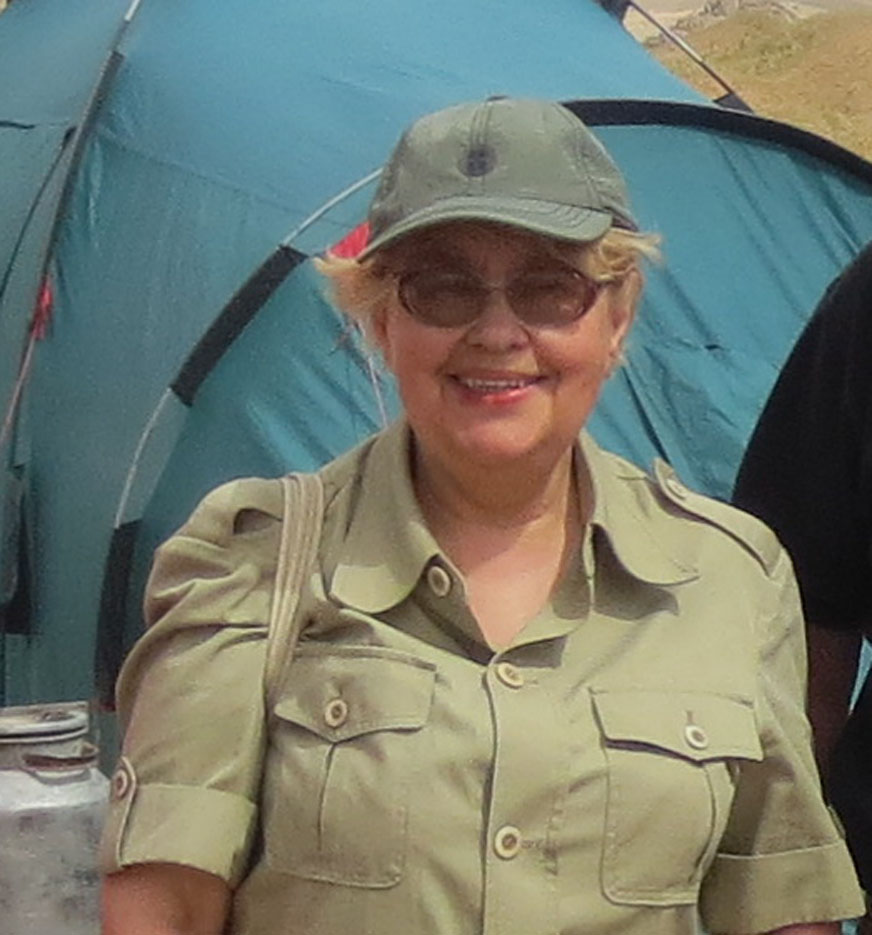2015

Lia N. Kogarko graduated from the Faculty of Geology, Moscow State University in 1958. She earned a Ph.D. in geochemistry in 1962 from the Vernadsky Institute of Geochemistry and Analytical Chemistry, Russian Academy of Sciences, for her thesis “Fluorine geochemistry of the Lovozero peralkaline massif, Kola Peninsula”. In 1975, she was awarded the degree of Doctor of Science by the same institution. The title of her D.Sc. Thesis was “Physical-chemical conditions of the formation of agpaitic nepheline syenites and related mineral deposits”. L.N. Kogarko is a leader in the investigation of alkaline and carbonatitic magmatism in Russia.
Since 1980, she has been Head of the Laboratory of Geochemistry and Ore Potential of Alkaline Rocks at the Vernadsky Institute. In 1990, she was appointed Professor and in 1991, elected as Corresponding Member of the Russian Academy of Sciences. In 1997, she was elected as Full Member (Academician) of the Russian Academy of Sciences, which is the highest scientific title in Russia.
Prof. Kogarko organized active scientific collaboration with Danish scientists, in particular with President of the Danish Royal Academy of Science and Letters, Professor Henning Sørensen. She lectured in Danish universities and took part in cooperative expeditions to alkaline rocks of Greenland and Kola Peninsula. In 1996, she was elected Foreign Member of the Danish Royal Academy of Science and Letters.
Between 1980 and 1989, she served as a member of the Council of the International Association on Geochemistry and Cosmochemistry, and between 1991 to 1996, she was a co-leader (together with Prof. K. Bell, Canada, and Prof. J. Keller, Germany) of the extremely successful project of the UNESCO International Geological Correlation Programme (now International Geoscience Programme) entitled “Alkaline and carbonatitic magmatism of the Earth (Project 314)”.
In cooperation with Prof. A. Wooley (Natural History Museum, London) and colleagues, she published a monograph on alkaline rocks of the former Soviet Union (Part II), which immediately became a bibliographic rarity and the whole edition was soon sold out.
In 1973, a group of US scientists proposed to name a new mineral, Na3(SO4)F, kogarkoite in honour of Prof. Kograko, and that proposal was approved by the IMA.
The research interests of L. Kogarko are broad and span from alkaline magmatism and fluid regime in highly alkaline magmatic systems, to the geochemistry of the Earth’s upper mantle, and to the processes of ore formation. This work has led to the creation of a new research direction in Russia, namely geochemistry of highly alkaline ore-magmatic systems. Prof. Kogarko’s studies enabled precise determination of the age and isotope characteristics of the sources of alkaline rocks and mineral deposits of the Kola Peninsula and Polar Siberia. She has also developed geochemical models and prospecting criteria for supergiant apatite deposits and rare metal ores of the Kola Peninsula and Greenland, which serve as an important source for strategic resources (REE, Nb, Ta, Zr, P). She has investigated experimentally more than 20 phase diagrams, which in addition to rock-forming silicates, involve ore minerals found in alkaline rocks (apatite, loparite, etc.). Based upon experimental and theoretical studies, L. Kogarko has successfully predicted genetic links between cryolite ores and F-rich alkaline granites of Transbaikalia.
L. Kogarko has created a new concept of the evolution of alkaline magmatism in Earth’s geological history. She proposed that the appearance of alkaline magmatism around 2.5–2.7 Ga and its progressively increasing importance throughout the Proterozoic and Phanerozoic is related to a change in the geodynamic regime of the Earth and oxidation of the mantle due to mantle-crust interaction. This global model is consistent with the geochemistry and ore-bearing potential of alkaline and carbonatitic formations.
L. Kogarko discovered for the first time alkali carbonate inclusions in perovskite from carbonatites of Polar Siberia. This served as a solid basis for the development of the now widely accepted hypothesis that carbonatite magmas form by liquid immiscibility of carbonate and silicate melts. The coexistence of two melts in alkali-rich compositions has been experimentally demonstrated by P.J. Wyllie and his students.
A further significant contribution from L. Kogarko to the field of geochemistry and petrology has been provided by her work on alkaline magmatism in oceanic settings. She organized and served as Chief Scientist during the 9th and 17th legs of R.V. “Academician Boris Petrov”. During these legs, a large volume of material on the magmatism of ocean island basalts has been collected and investigated. L. Kogarko was the first geochemist who discovered in 1991 primary carbonates in the metasomatized oceanic mantle (Canary Islands, Fernando-de-Noronha Archipelago), which was acknowledged in Britannica Book of the Year 2002 in an article dedicated to the geology and geochemistry of rock-melt reactions.
In addition to being an excellent scientist, Prof. Kogarko is also an efficient manager and team leader. During the past 30 years, she has organized and managed numerous annual conferences on alkaline, carbonatitic and kimberlitic magmatism, which were held in Moscow, Urals, St. Petersburg, Ukraine, Belorussia and other places. She often worked in very difficult terrain and weather conditions in Polar Siberia, Kola Peninsula, Karelia, Uzbekistan and other regions. To reach outcrops of alkaline rocks, she had to canoe on Siberian rivers on many occasions.
A distinguished feature of Lia Kogarko is her inexhaustible optimism in all aspects of life.
L. Kogarko is an author and coauthor in more than 300 research papers and 10 monographs.